Wellbeing: How Urban Container Gardening Contributes
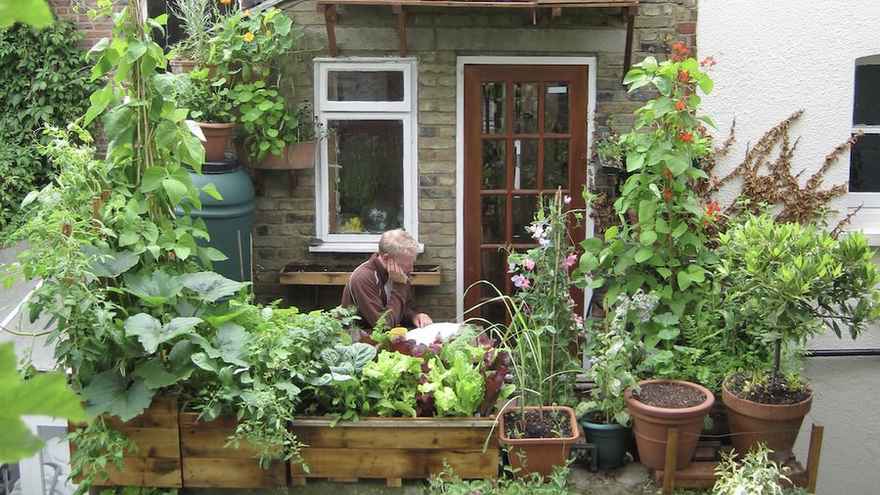
At first glance, growing food in containers at home might seem like just a fun hobby with the bonus of a few freshly grown veg. However, in my experience working with hundreds of other container growers over the last eight years, it can also support change at deeper levels.
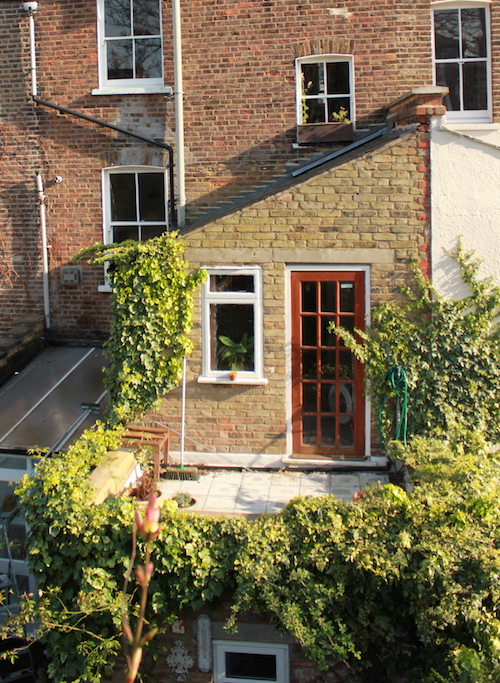
My 6' x 8' balcony in central London - rarely used the first ten years I lived there.
I first discovered this when I lived in a flat in London. For years, I’d had a 6 x 8 foot balcony (pictured above), that I never used much. But then I started growing on it. I was amazed at how a grey slab of concrete became a green and beautiful space, teaming with life. I spent a few relaxing, rejuvenating minutes on it every day before and after work. I watched the ladybirds, bees and hoverflies that visited, the blackbirds that scavenged for worms in my containers. Even the tussle with the pigeons and squirrels who tried to eat my plants was entertaining on some level.

Growing food on the balcony helped me feel closer to nature and the seasons in central London.
In the middle of bustling, bristling London, I felt closer to the seasons. I sowed seeds in spring, harvested salads and peas on balmy June evenings, gathered in tomatoes before the first frosts, and picked kale and salads on cold days in winter. I learnt for the first time how the winds change through the year: cold and persistent North Easterlies in spring, warmer South Westerlies in summer. Instead of getting salads and blueberries in plastic packaging, I picked them on my doorstep. For most of human history, people have picked and eaten some of their food direct from the plants. Yet in the 21st century, many people never have this opportunity, particularly in cities. Arguably, this is a fundamental part of who we are, and there is emerging evidence that this disconnection with our food supply is one of the root causes of our unhealthy eating epidemic. In the middle of the city, I was beginning to feel reconnected to nature, the seasons and my foraging ancestors – and all because of a few plant pots on my balcony. A small sign of the shift was that my wife and I started, unconsciously, referring to the small concrete balcony as ‘the garden’.
Connecting with the neighbourhood
Meanwhile, the front of the flat (below), which previously served only as an unglamorous entry and exit – and place to put the rubbish bin - became a connection to the local neighbourhood.
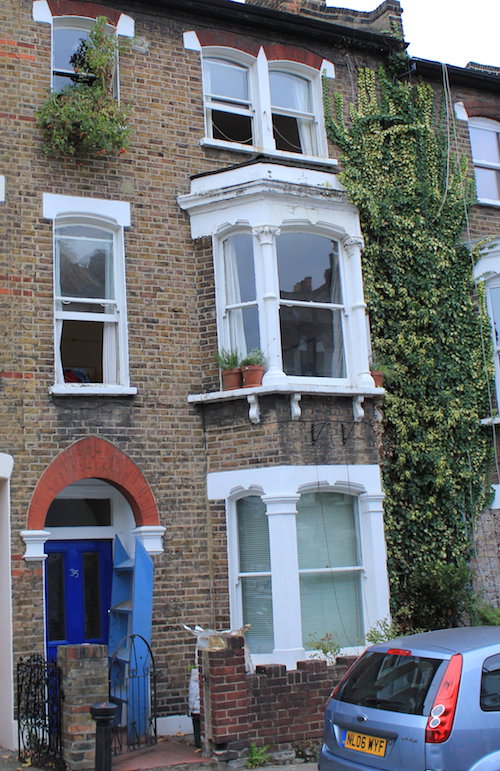
The front of the flat devoid of containers (actually this was taken just as were moving out - so some evidence of growing remains!).
I started striking up conversations with passers-by for the first time as I gardened on the pavement. The plants brought colour to the street and the unusual edible crops brought intrigue. Some people even made diversions or special visits to see the latest veg developments. Builders inspected my squash plants every day, fascinated by how fast they grew.

With edible plants growing at the front, it became a space to meet and talk to neighbours and passersby. A rare opportunity to strike up conversation in central London.
Lifeless concrete backyard
When I moved to Newcastle, we rented a home with a concrete backyard (below). Situated in a swathe of concrete, it was lifeless, eerily devoid of bird song or insect noise.
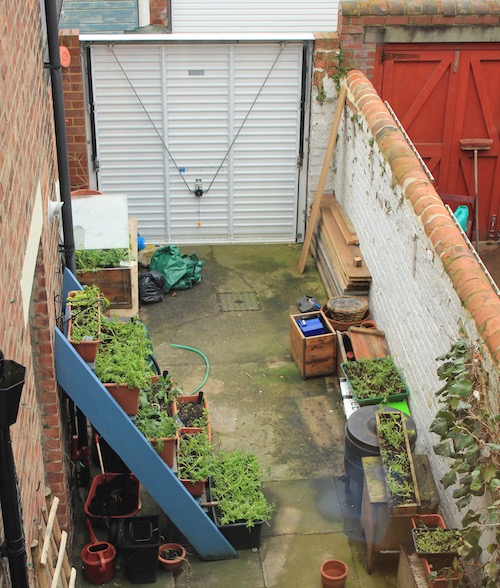
Concrete backyard in our rented home, shortly after moving in - a soulless place with little life.
When I filled it with plants (below), it became alive again. One day, filming in the garden, the sound of the bees was so loud I would have told them to quieten down if I could.
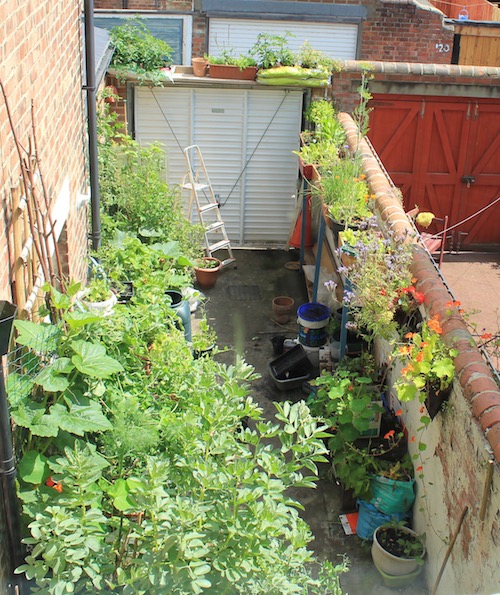
With plants comes life, and the concrete is transformed.
Sparrows visited the runner beans to catch aphids to feed their young. A blackbird took all the labels off my tomato plants for its nest, a nuisance, but it made me smile nonetheless.

Plant labels removed and rearranged by the blackbird!
Suburban and urban front yards
Three years ago we moved to another house, this time with an unprepossessing concrete front yard (below). Thousands of these, grey, lifeless spaces line our cities and suburban streets, often gloomy and depressing.

Our new home. Complete with typical, uninspiring concrete front yard.
But, as you can see in the picture below, with a few edible crops in containers the feel is transformed, adding colour and interest for passers-by. Imagine how the feel of cities will change if more people do this?! If every urban street had one or two edible gardens.

Edible plants and flowers lift the feel of the concrete frontyard.
So while food growing is a fun hobby that gives you delicious food, it can offer more than that. One of these (there are others I’ll write about another time) is to bring you closer to nature, the seasons and your community. This in turn can improve your wellbeing and how you feel about where you live. It brings greenery and life to the concrete, improving the look and feel of the street, and can provide a focal point of interest for the local community. I love living in the city but I also love nature. Food growing in pots enables me to have both.
Your turn
If you grow food in the city, I’d love to hear if it has changed how you feel about where you live in the comments.

17 comments
Leave a comment